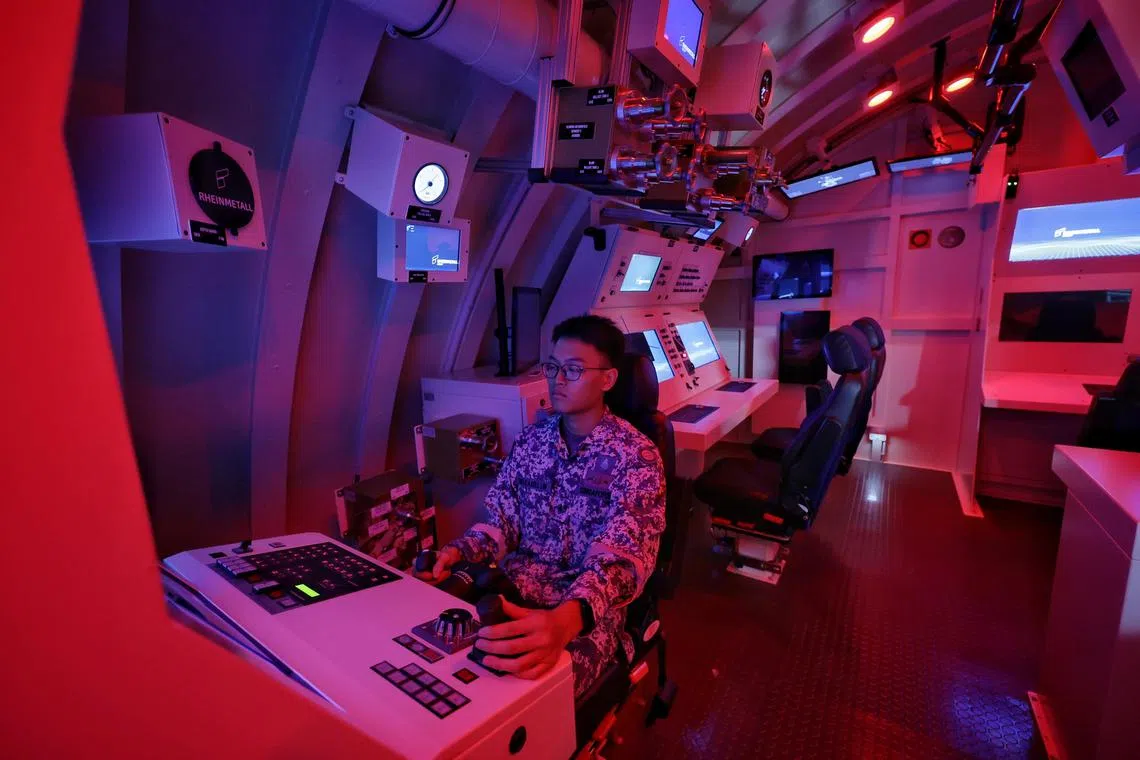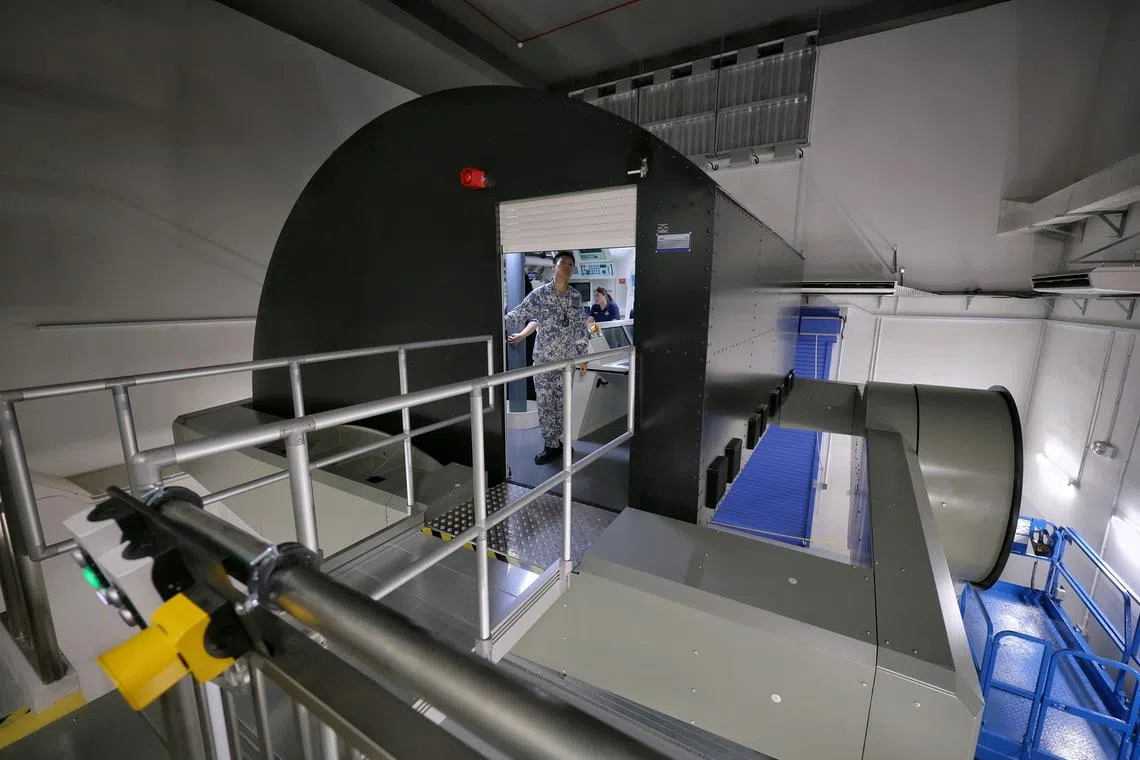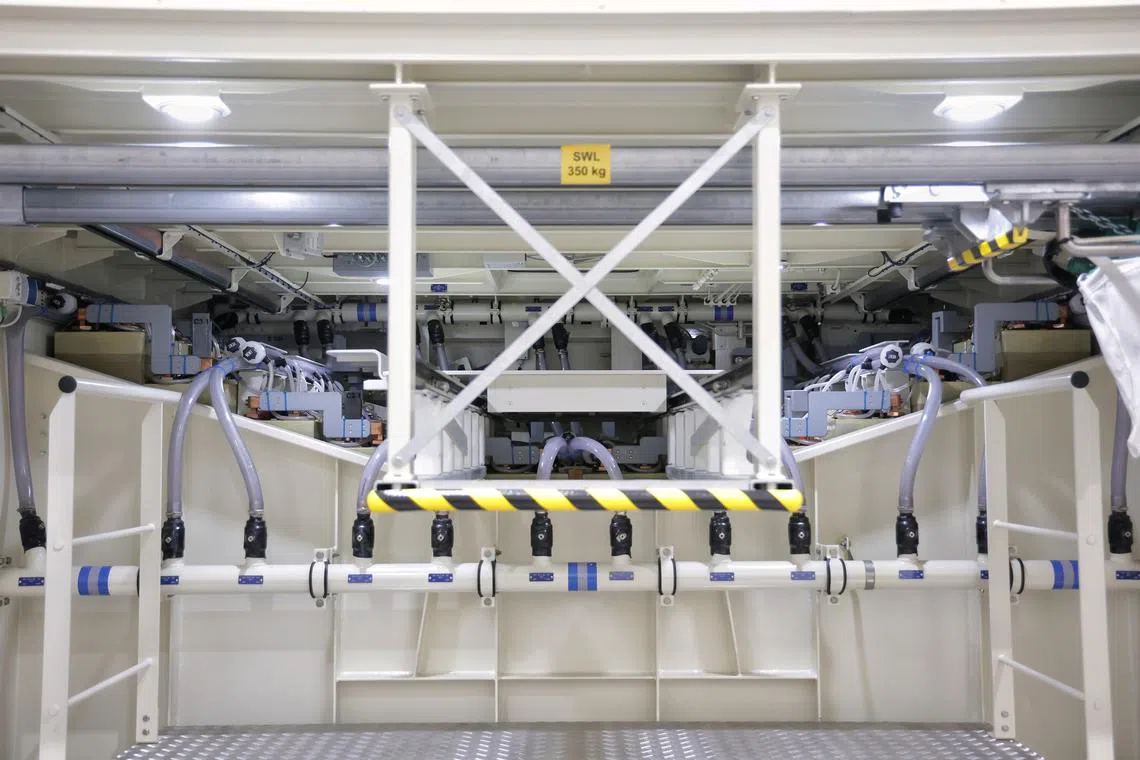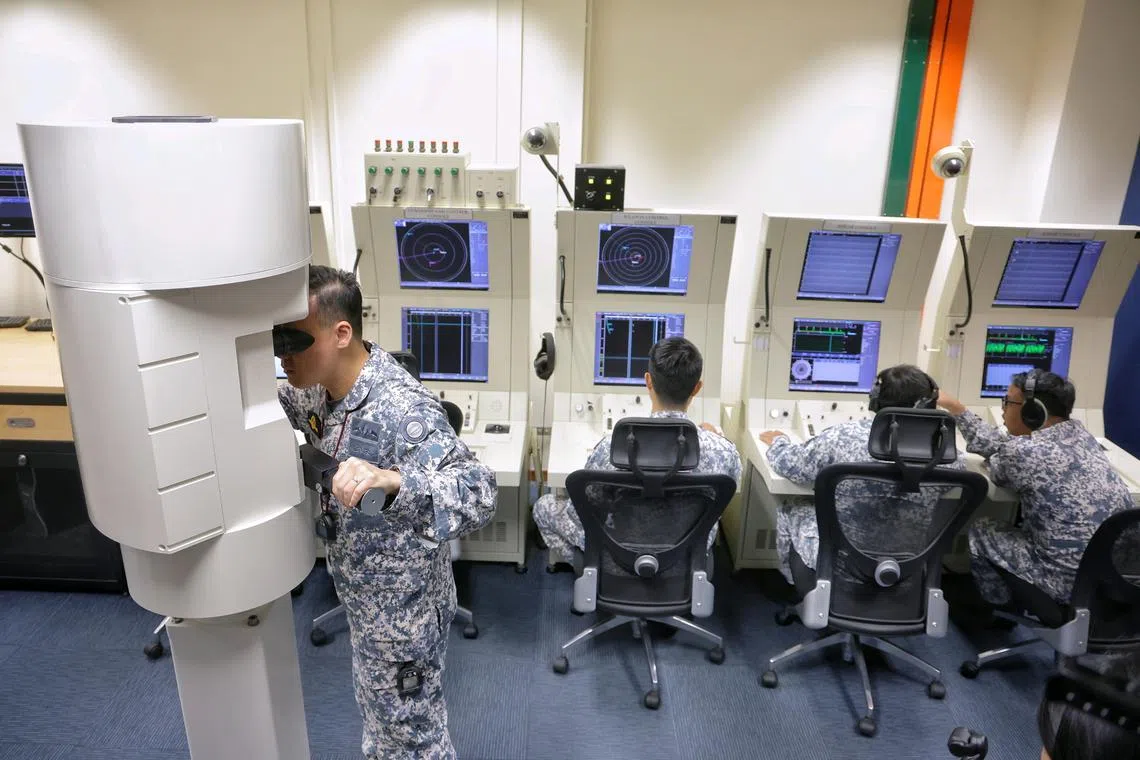S’pore navy’s upgraded training centre is ‘fifth submarine’ for new generation of submariners
Sign up now: Get ST's newsletters delivered to your inbox

The training centre houses several training simulators closely modelled on the new submarines.
ST PHOTO: KEVIN LIM
Follow topic:
SINGAPORE – The Republic may have four new Invincible-class submarines, but it is a “fifth boat ashore” that plays a critical role in preparing the Republic of Singapore Navy’s (RSN) submariners for their duties.
That is the nickname sailors here have given the RSN’s upgraded submarine training centre at RSS Singapura – Changi Naval Base, which houses several training simulators closely modelled on the new submarines.
The simulators are a significant part of the nine-month course that the RSN’s trainees must undergo before becoming full-fledged submarine operators. Before qualifying as submariners, they will still need to spend some training time on actual submarines.
The Straits Times got a glimpse of the simulators ahead of the Sept 24 commissioning of the first two Invincible-class submarines,
One simulator is called the full-motion submarine dive trainer (SDT), which allows helmsman trainees to practise diving and manoeuvring procedures for the new Invincible-class submarine.
Submarines’ fearsome reputation for striking without warning comes from being able to lurk at depth. A new Invincible-class submarine can stay submerged for 50 per cent longer than the Archer-class boat that preceded it, but it still has to surface every four to six weeks to run its diesel-electric engines to charge its batteries, which are used for underwater propulsion.
At a demonstration of the SDT, a helmsman, overseen by an officer, ran through the procedures to replicate a descent into the depths, followed by an ascent back to the surface. The full-motion simulator allowed those inside the trainer to feel the sensation of being off balance as it tilted to replicate the motion of a submarine.

The full-motion submarine dive trainer lets helmsman trainees practise diving and manoeuvring procedures for the new Invincible-class submarine.
ST PHOTO: KEVIN LIM
In sharp contrast to the analogue instruments and physical buttons in the Archer-class, the operator stations for the new trainer are equipped with touchscreens.
A range of other trainers put prospective submariners through their paces individually, whether in competencies such as damage control or vocation-specific training such as sonar operations or engineering.
For instance, a maintenance trainer replicates the rudder system, electrical switch boxes and a small cross-section of the battery compartment of the Invincible-class submarines.
An actual battery compartment comprises hundreds of lead-acid battery cells, running along the lower deck of the submarine for nearly its entire 70m length, powering the submarine when it is under water.
The trainer clones these cramped spaces, where engineers spend up to six hours lying prone while performing tasks such as preventive maintenance or checks, providing budding submariners with a realistic environment to practise battery maintenance work.
There is no live current in the trainer, so there is no risk of electrocution or hardware damage. But trainees don gloves that light up when they make a mistake, indicating that they would have received a shock.

A set-up for the battery compartment of an Invincible-class submarine at the training centre.
ST PHOTO: KEVIN LIM
Colonel Fong Chi Onn, commander of the RSN’s 7th Flotilla – which operates the navy’s submarines – said moving large parts of submariner training ashore, particularly the submarine virtual procedural trainer (VPT), has been transformational.
“Training on shore allows us to increase the throughput of our training and increases its effectiveness by enabling the replicating of complex scenarios safely before going out to sea,” he said.
He added that training crews on actual submarines would require the training programme to compete with other assignments and be dependent on the availability of boats. The situation is further complicated by cramped conditions that limit the number of personnel who can be on board.
The VPT replicates the roughly 12 million parts on each boat.
It was developed by Thyssenkrupp Marine Systems, which also manufactured the Invincible-class submarines, along with the Defence Science and Technology Agency and the RSN.
As a virtual twin, it models the behaviour of the submarine’s various systems and enables crew members to practise their responses to emergency scenarios that might be too rare or risky to simulate in real life.

A demonstration of command team training in a warfare scenario, with officers manning the periscope and consoles, in the simulator for an Archer-class submarine at the training centre.
ST PHOTO: KEVIN LIM
This is the first time that such high-tech training aids have been used at the training centre, which was built in 2015 and expanded in 2023 with the introduction of training on the VPT and maintenance trainer.
Military Expert 4 (ME4) Toon Wei Kiat, a marine engineer on board the RSS Impeccable, said advances in technology and simulators have enabled the navy to provide safe and realistic training in a classroom setting.
A submariner since 2003, the 48-year-old said it is possible to get electric shocks when doing battery maintenance on an actual submarine.
“(The simulators) enable trainees to correct any mistake before performing real tasks on board an actual submarine and helps them avoid any unwanted scenarios happening while out at sea,” ME4 Toon said.


